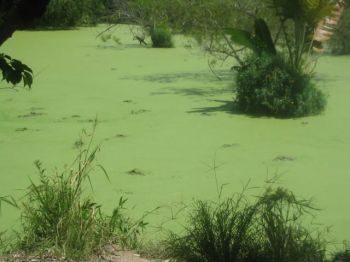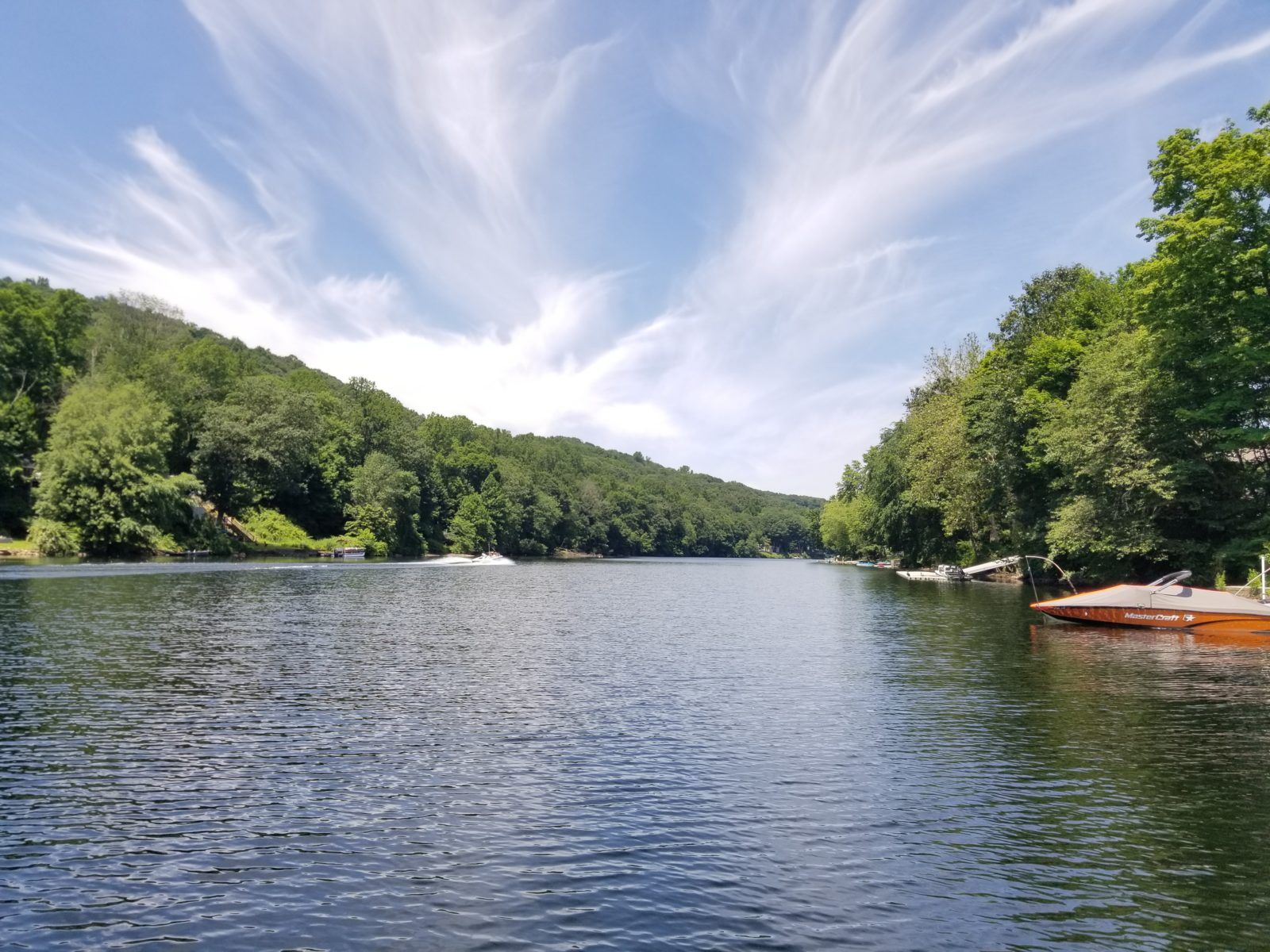The Lake and Pond Management ‘Do it Yourself’ Dilemma
May 24th, 2010
by Shannon Junior, Aquatic Ecologist
 I often respond to calls from homeowners and association managers who have been working hard to control nuisance aquatic vegetation problems in their ponds or lakes, but have been unsuccessful. They have done extensive internet research and have talked to plant “experts” over the phone. Based on the information gathered, they have purchased aquatic herbicides and applied them to their ponds. Others have even taken a more hands-on approach and have tried to manually remove vegetation with rakes or nets. Along with many success stories for these strategies, there are more than a few dismal failures. The absolute most important component of any nuisance aquatic vegetation control or eradication program is the proper identification of the target pest. And while the internet is full of valuable information, there is no substitute for having a qualified professional evaluate the problem. I have visited numerous ponds where owners were complaining of “lily pads” when the problem was actually watershield. It’s very easy to mistake duckweed or watermeal for pond algae – they all look like “green slime” on the surface of the pond. And there are some species of vegetation, like hydrilla and egeria, that even some experienced ecologists have difficulty distinguishing from one another.
I often respond to calls from homeowners and association managers who have been working hard to control nuisance aquatic vegetation problems in their ponds or lakes, but have been unsuccessful. They have done extensive internet research and have talked to plant “experts” over the phone. Based on the information gathered, they have purchased aquatic herbicides and applied them to their ponds. Others have even taken a more hands-on approach and have tried to manually remove vegetation with rakes or nets. Along with many success stories for these strategies, there are more than a few dismal failures. The absolute most important component of any nuisance aquatic vegetation control or eradication program is the proper identification of the target pest. And while the internet is full of valuable information, there is no substitute for having a qualified professional evaluate the problem. I have visited numerous ponds where owners were complaining of “lily pads” when the problem was actually watershield. It’s very easy to mistake duckweed or watermeal for pond algae – they all look like “green slime” on the surface of the pond. And there are some species of vegetation, like hydrilla and egeria, that even some experienced ecologists have difficulty distinguishing from one another.
Knowing your pest is essential for identifying the appropriate treatment protocol, and many do-it-yourself pond managers have spent valuable time and money on unsuccessful strategies. For instance, copper-based herbicides are widely available on-line and at local farm cooperatives. However, these are probably the most often misused herbicides. While they do have a fairly broad spectrum, they will not help in every situation, and no amount of copper will control species like watershield or watermeal. I have also visited sites where people were manually harvesting hydrilla, which can reproduce by fragmentation. By implementing that strategy for control, they were unwittingly helping the plant to proliferate. The most tragic failed vegetation management treatment plans for me are sites where improper herbicide use has resulted in a fish kill.
Chemical herbicides are safe when used for appropriate target pests and in a manner consistent with their label. Aquatic pesticides must go through an EPA registration process that includes comprehensive environmental and laboratory testing before they are released for public use. But inexperienced consumers often misuse the products, applying them to the wrong target pests, using inappropriate application equipment, or applying the wrong amount or concentration of the herbicides.
Professionals dedicated to environmental stewardship will always strive to educate their clients and the public about the fundamentals of sound long-term pond and lake management. Reputable firms will be more than happy to provide free on-site consultation regarding nuisance vegetation problems in your pond or lake. Whether you chose to hire a professional applicator or want to do it yourself, qualified professionals can help you formulate an appropriate strategy to ensure the long-term health of your aquatic resource.
Contact the experts at 888-480-5253 for all of your lake, pond and fisheries management needs.
Shannon Junior is an Aquatic Ecologist with SOLitude Lake Management. Since 1998, SOLitude Lake Management has been committed to providing full service lake and pond management services that improve water quality, preserve natural resources, and reduce our environmental footprint. Services are available throughout the Eastern United States. Fisheries management consulting and aquatic products are available nationwide. Learn more about SOLitude Lake Management and purchase products at www.solitudelakemanagement.com.










